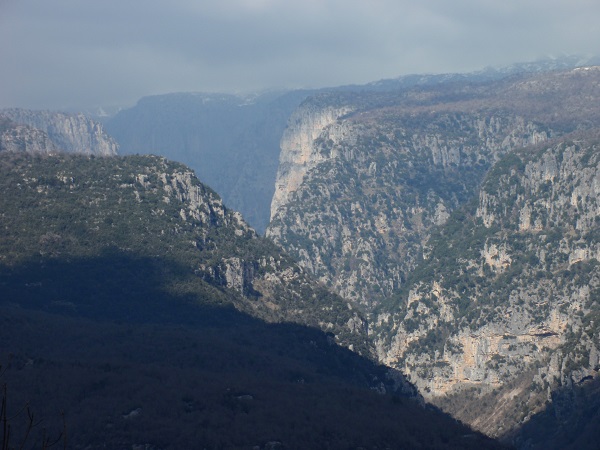Zagorohoria
By Christopher Deliso
(Adapted from a text originally published on Balkanalysis,cm, 2008)
If you’re looking to see one of Greece’s lesser-visited natural wonderlands, whether for hiking or just relaxing and enjoying local culture and gastronomy, you can’t go wrong with the historic mountain villages of the Zagorohoria region. The area is a convenient drive from Ioannina in Epiros, and makes a convenient side-stop for those passing further to the Ionian coast, to places like Parga and islands like Corfu, or the ferry to Italy from Igoumenitsa.

I’ve had the pleasure of visiting this fantastic remote region five times, between former guidebook writing and general travels, and it has always rewarded with wonderful local hospitality, serene atmosphere, great food and pristine nature. Here below are some specific local tips from my past experience about places to enjoy and relevant resources.
A wonderland of stone bridges, deep crevices, and grand old mansion guest-houses set in tiny villages connected by ribboning roads, the Zagorohoria is a sprawling set of villages north of Ioannina, stretching alongside Greece’s Vikos Gorge.
The Zagorohoria’s name results from a combination of the old Slavonic za Gora (‘behind the mountain’), and the Greek word for villages (horia). While time and emigration have taken their toll on the once-lively village settlements (most of the ancestral mountain strongholds have long been converted to guest houses), it is still a very populated visited area among active tourists in all seasons.
Preparation
To see the Zagorohoria, it’s possible to make driving or cycling tours, but hiking is really the way to get out and about and into nature. You don’t need a guide, though numerous companies offer specialized tours, but get updated on conditions from the EOT (National Tourism Organization) in Ioannina first.
Also useful is the Pindus-Zagori 1:50,000 map from Anavasi Mountain Edition, available online pr in Ioannina, Monodendri, Papingo and in some guest houses in other villages too. With a map or GPS and good hiking boots, a compass, sunscreen, hiking stick and water, you’re set.
The whole wild area has endemic flora and fauna (the largest being bears), and as in excellent place for both observing the little things (like flowers in spring) and all manner of birds.
Some Specific Hikes
Along with numerous day hikes, a three-day ‘grand tour’ is possible, sleeping in guest houses and mountain huts along the way. There are numerous variations depending on your desired point of entry/exit and whether you’re traveling independently or as part of an organized group.
One such hike goes from Monodendri to Tsepelovo. From Monodendri the trail leads through the stunning Vikos Gorge to the Papingo villages, at 1950m. The 52-bed hut is always open and has a warden, generator power and food.
From here it’s a 30-minute hike to the sublime Drakolimni (Dragon Lake), though returning takes 45 minutes.
From Drakolimni, the spectacular ascent to Mt. Gamila is a tougher hike, and takes four hours. Another five hours from Gamila brings you finally to Tsepelovo. Alternatively, from Gamila hike up to Vrisohori, along the Aoos River, with crystal-clear mountain springs.
Beyond the Zagorohoria
The slow-paced frontier town of Konitsa, a center for outdoor activities, has a certain whimsical charm and is definitely worth a visit. Further north, the so-called ‘Petrina Choria’ (Stone Villages) are a collection o of sparsely-populated villages decorated by magnificent stone churches, indicating the traditional masonry skills of the locals. Intrepid travelers can continue on north to Albania, or head back est to the Ionian cast for visiting popular islands like Corfu.